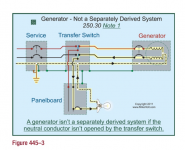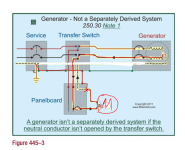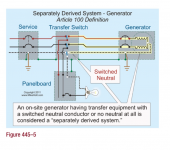Question: if generator only feed a motor, let's say an elevator. 208v 3P system. And ATS is 3P. I understand Not a separately derived system is show as below. Now, if it is feeding a elevator, since it is a motor, then i don't need a neutral. Then if there is a single phase to ground fault when it feed by generator, since there is not neutral conductor, how can fault go back to the generator? if there is other ATS, it can follow other ATS's neutral back to the generator. What if there is only one 3P ATS in the system and feed the motor without neutral?





